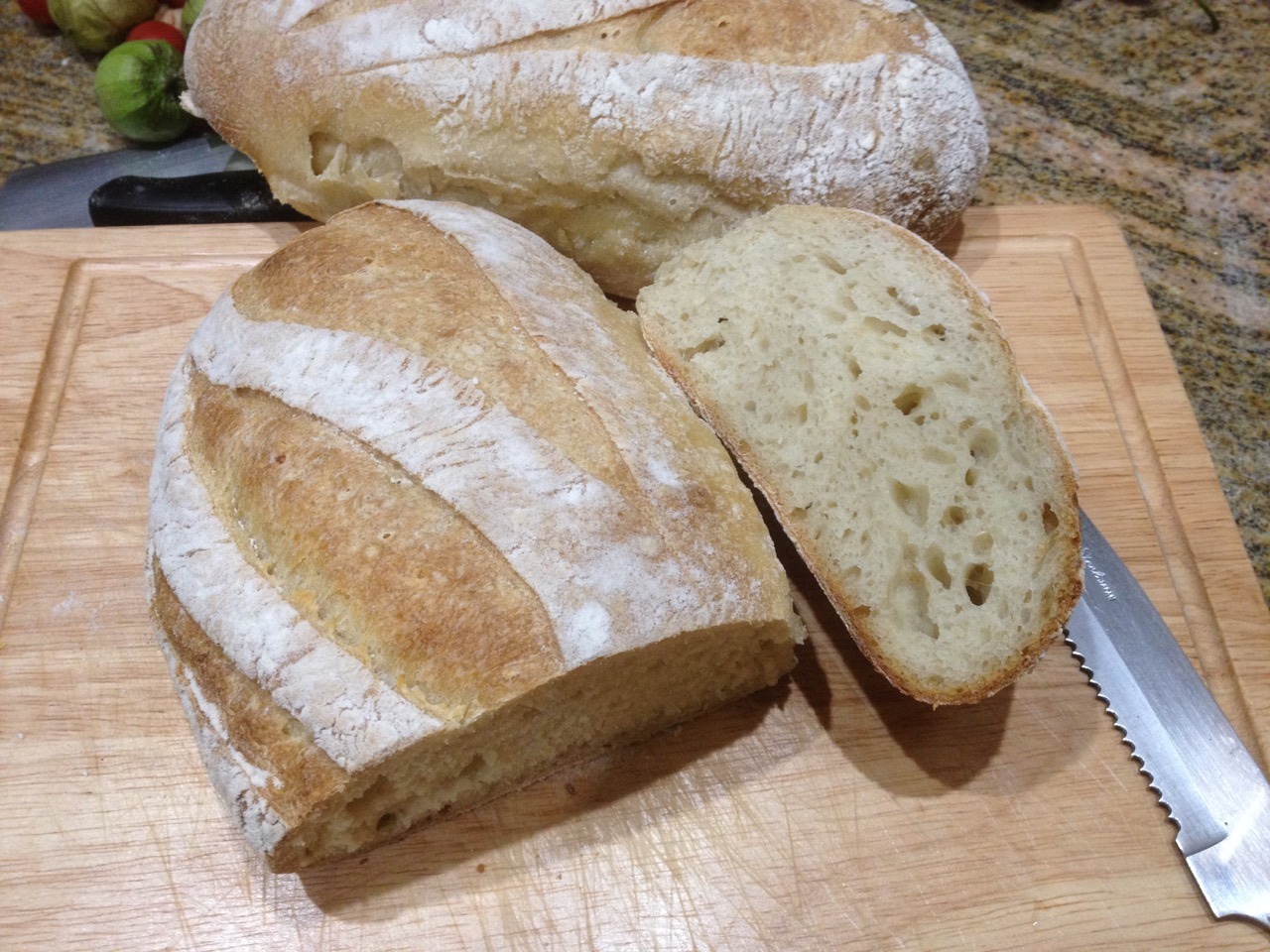We were given a huge bag of homegrown potatoes recently, which are beautifully creamy, so I thought I’d try potato sourdough. After a bit of tweaking I’m very happy with it. I would rate it as an advanced bread to try, as it relies on a feel for the dough consistency.
Potato sourdough; getting the proportions right.
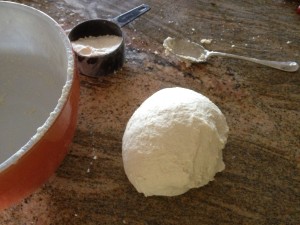
The big question here is how much potato to flour. I have a few recipes for potato bread, some with minimal potato, but I based mine on the nearly half/half split of the Il Fornaio Baking cookbook, although skipped the minced garlic and parsley for a more general purpose loaf, and used sourdough rather than yeast.
I am happy with the result. The flavour is quite neutral although a little of the potato comes through. It takes jam and honey well, but I think would really shine as warm bread on the dinner table, just with butter. The loaf is moist, so warming it adds to the mouth feel.
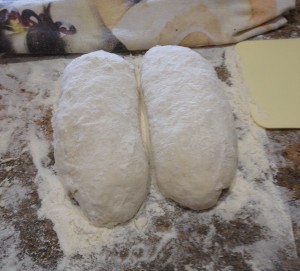
The moisture in the mashed potato means you can forget your standard bread method. My first attempt turned into an ordeal of adding more and more flour. Potato dough has a strange property of starting fairly solid (think mashed potato piled up), then getting wetter and wetter with time. Some recipes cope with this by using minimal kneading, then rising and baking in a tin, but with this recipe you can get a good stone-baked loaf even with sourdough. Mixing the mashed potato with the flour first, and leaving to stand, helps the flour draw out moisture, giving a workable dough.
I divided the mix into two small loaves to get a good amount of drying during baking. A large loaf can be stodgy in the middle even after an hour’s baking.
Method: potato sourdough
- 370 g potatoes (approx)
- 450 g (3 cups, 750 mL) bread flour
- 2 tbsp sourdough starter
- 100 mL water
- 1.5 tsp salt
Boil and peel the potatoes, then mash well. Add the flour and mix well, rubbing through the fingers like a pastry dough to give a breadcrumb texture. Leave for half an hour or more to hydrate the flour.
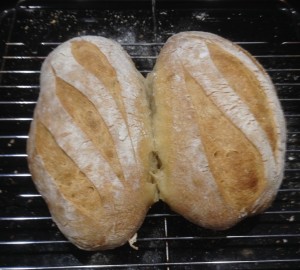
Add the sourdough starter, water and salt. Mix, turn out onto the bench, and knead. This dough develops during kneading in the opposite way to standard dough, it starts out stiff and dry, in fact almost as stiff as pasta dough, and becomes more fluid with work. Knead for 7 minutes, or until you get tired of it. This is where you need to judge if the dough is a workable consistency. Potato and flour batches will vary. You should have a very smooth silky dough.
Put in a bowl, cover, and leave for three hours or so to rise.
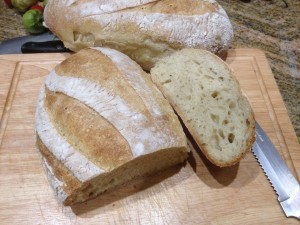
Tip out onto the bench, knead again. You will probably need plenty of flour too keep the surface from getting too sticky.
Divide into two small loaves, knead to even balls, and shape. Leave to rise on plenty of flour on the bench top, with a cloth cover.
Lift to a polenta-dusted baking peel*, score, and throw onto a preheated baking stone in a hot oven. Bake in decreasing heat for 45 min. I preheat my oven to 240 C, leave it there for the first 5 min, then turn it down to minimum for the remaining time.
*As the dough is quite soft in the final stages, I leave it to rise on the bench, then lift it with a pastry card. This minimises deformation in getting it into the oven.
If you wanted to make a yeast dough, you could add it at the same stage as the sourdough starter, but your rising times would then be much shorter.
Other sourdough additions
A great thing about home made sourdough is that you can add garden produce to give your loaves some variety. I’ve got home grown caraway on my list of extras, and fennel seed would be great for a small dinner loaf.
The potato bread has got me thinking that sweet potato sourdough would be a nice alternative in Autumn when they are in abundance. Nice orange bread, mmmm, with the extra flavour of sweet potato.

